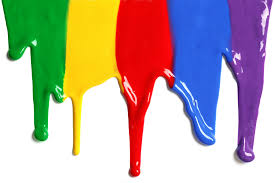
03 Feb Facts About Color That Almost Seem Too Ridiculous To Be True
Color is the backdrop of our lives. And the colors we surround ourselves with in daily life affect us profoundly. And they affected history. Writing in the Huff Post, Todd Van Luling talks about “8 Things You Didn’t Know About Color That Almost Too Ridiculous To Be True.”
You likely take the various colors around you for granted, assuming there’s nothing special about the blue of your jeans or anything potentially disgusting about the browns of that painting you bought at an antique store. But many colors are derived from odd sources.
For instance, rulers of France and much of Europe had to be wary, for not knowing about certain colors was potentially deadly. Green wallpaper can be much more dangerous than you thought.
Much of the research behind these eight bizarre facts is extensively based on journalist Victoria Finlay’s amazing 2014 book The Brilliant History of Color in Art.
1. Until 1925, a common shade of brown was made from the flesh of Egyptian mummies.Smithsonian dates the end of “mummy brown” as late as 1964, when the “manufacturer” ran out of mummies to grind into paint. Painters had been using mummy brown for centuries, collecting the bizarre substance, likely at first from an apothecary, that would sell for medicinal purposes.
Victoria Finlay explains in The Brilliant History of Color in Art how this came about:
Actually, mummy was first used as a medicinal substance as early as 1300, which is even more bizarre. Virtually all the pigments that were known to painters from the Middle Ages to the Renaissance were also medicines, including lead white, minium, vermilion, chalk, orpiment, sepia, ultramarine … and mummy. These medicines were supplied by apothecaries, who were the main sources of supplies for painters. No doubt an artist somewhere saw mummy in his local apothecary shop and thought, “I wonder if this would make a good bit of paint?”
Eventually in 1712, an artist supply shop was opened in Paris called À la Momie or “To the Mummy.” The color really took off and later in the century and according to Finlay it was said that the finest brown used by the current president of the Royal Academy of Arts was “the flesh of mummy, the most fleshy are the best parts.”If you’re curious what ground up mummies looks like as art, the above painting, “Interior of a Kitchen,” owned by The Louvre and painted by Martin Drölling in 1815 apparently uses “mummy brown” extensively.
As mentioned before, you probably couldn’t find mummy brown to paint with these days. An article in Time from 1964 quoted Geoffrey Roberson-Park, the managing director of a respected London color maker, as saying, “We might have a few odd limbs lying around somewhere, but not enough to make any more paint.”
2. The royal purple made famous by the Romans and Cleopatra was created by soaking thousands of rotten shellfish in urine.
Finlay writes in The Brilliant History of Color in Art that Queen Cleopatra was obsessed with this color and had everything from sails to sofas dyed in the pigment. When Julius Caesar visited in 48 B.C., he became hooked as well and made it a color of royalty for Rome.
Although the color came to mean extreme wealth, the process of making this purple was beyond disgusting, as Finlay explains, “More than 250,000 murex brandaris and murex trunculus shellfish were needed to extract half an ounce of dye, just enough for a single toga.”
And according to Finlay’s book, the process of making the purple smelled so bad that it had to be done outside city walls. This disgustingness then stuck with the color:
These purple vats had to be outside the city walls because no one could live next to the horrible smell made by rotten shellfish soaking in stale urine mixed with wood ash and water. Even the clothes that had been dyed with them had a distinctive odor of fish and sea. The historian Pliny called it “offensive,” but for other Romans it was the smell of money.
According to Smithsonian, this gross process more or less continued as late as 1856, when a new purple was created as the first synthetic dye by an 18-year-old chemist named William Perkin.3. The iconic yellow paint Van Gogh used in many of his paintings may have actually been partially to blame for his mental state…



Sorry, the comment form is closed at this time.